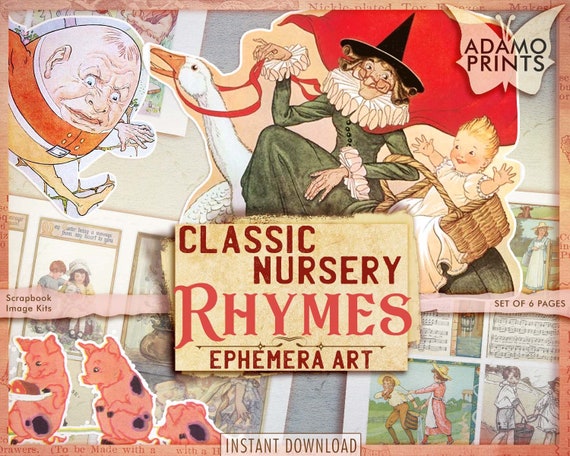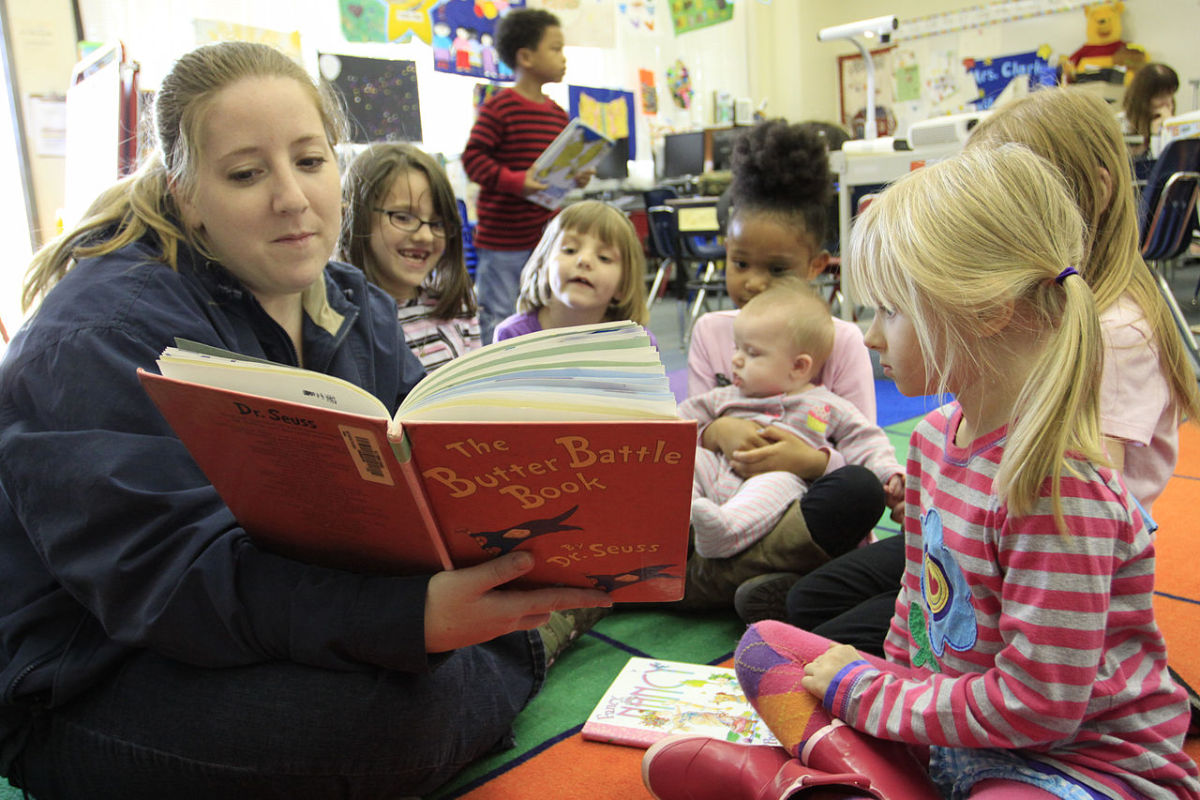The Magic of Bedtime Stories
Welcome to the World of Bedtime Stories
In the gentle twilight hours when the day slowly surrenders to night, there exists a magical ritual that has connected generations of families across cultures and continents. Bedtime stories represent far more than simple entertainment; they are powerful vessels of imagination, learning, and emotional bonding that shape young minds and create cherished memories that last a lifetime.
The tradition of children stories and kids stories has evolved dramatically over centuries, transforming from oral folklore passed down through generations to beautifully illustrated picture books and interactive digital experiences. Yet at its core, storytelling remains one of humanity's most fundamental ways of sharing wisdom, values, and wonder with the next generation.
Cognitive Development
Bedtime stories enhance vocabulary, comprehension skills, and critical thinking abilities while introducing children to complex narrative structures and literary devices.
Emotional Bonding
Shared storytelling creates intimate moments between parents and children, fostering trust, security, and emotional intelligence through character experiences.
Exploring Different Types of Stories
Classic Fairy Tales and Magical Stories
Fairy tales remain the cornerstone of children's literature, offering timeless wisdom wrapped in enchanting narratives. These magical stories transport children to realms where anything is possible, where brave heroes overcome seemingly impossible odds, and where good ultimately triumphs over evil. From the Brothers Grimm collections to Hans Christian Andersen's masterpieces, classic tales have provided moral guidance and entertainment for generations.
Popular Classic Fairy Tales Include:
- Cinderella - Perseverance and kindness
- Snow White - Inner beauty and friendship
- Rapunzel - Freedom and self-discovery
- The Little Mermaid - Following dreams
- Sleeping Beauty - True love's power
- Hansel and Gretel - Sibling loyalty
Modern interpretations of these fantasy stories often include diverse characters and contemporary values while maintaining the essential magical elements that make them captivating. Publishers now offer beautifully illustrated books that bring these stories to life with vibrant artwork that captures children's imagination and enhances comprehension.
Educational Stories and Learning Through Tales
Educational stories serve a dual purpose by entertaining children while simultaneously teaching valuable lessons about science, history, mathematics, and social skills. These carefully crafted narratives make complex concepts accessible and memorable for young minds. Learning through stories has proven to be one of the most effective methods of childhood education, as children naturally retain information presented in narrative form.
Science Stories
Stories about space exploration, animal habitats, weather patterns, and scientific discoveries that spark curiosity about the natural world.
Historical Tales
Adventures set in different time periods that teach about ancient civilizations, historical figures, and cultural traditions.
Math Adventures
Problem-solving stories that incorporate counting, geometry, patterns, and mathematical concepts in engaging contexts.
Moral Stories and Character Building Tales
Moral stories play a crucial role in shaping children's ethical development and social awareness. These thoughtfully constructed narratives present characters facing moral dilemmas, allowing children to explore concepts of right and wrong, empathy, and personal responsibility in a safe, fictional context. Fables from Aesop and other cultural traditions continue to provide timeless wisdom about human nature and social behavior.
Essential Moral Lessons in Stories:
Honesty and Integrity
Stories that demonstrate the importance of truthfulness and keeping promises, showing how honesty builds trust and strong relationships.
Kindness and Compassion
Tales that highlight empathy, helping others, and understanding different perspectives and experiences.
Perseverance and Courage
Adventures that showcase determination, facing fears, and never giving up when pursuing worthy goals.
Environmental Responsibility
Modern stories that teach conservation, respect for nature, and sustainable living practices.
Adventure Stories and Imaginative Tales
Adventure stories ignite children's sense of wonder and possibility, taking them on thrilling journeys to distant lands, magical kingdoms, and unexplored frontiers. These imaginative stories encourage creativity, problem-solving, and resilience while providing excitement and entertainment. Whether featuring brave knights, clever detectives, or ordinary children discovering extraordinary worlds, adventure tales inspire courage and curiosity.
Journey and Quest Stories
Tales of heroic journeys, treasure hunts, and epic quests that teach perseverance, teamwork, and strategic thinking.
- • Pirate adventures on the high seas
- • Explorations of mysterious islands
- • Searches for hidden treasures
- • Time travel adventures
Fantasy Adventures
Magical realms filled with mythical creatures, supernatural powers, and extraordinary challenges that expand imagination.
- • Encounters with dragons and unicorns
- • Adventures in enchanted forests
- • Magical spells and potions
- • Fairy kingdoms and mystical beings
Animal Stories and Nature Tales
Animal stories hold a special place in children's hearts, combining entertainment with valuable lessons about nature, friendship, and responsibility. These tales often feature anthropomorphized animals with human-like qualities, making complex emotions and social situations accessible to young readers. From farm adventures to jungle expeditions, animal stories teach children about different species, habitats, and the importance of environmental conservation.
Popular Animal Story Themes:
Pet Adventures
Stories about loyal dogs, clever cats, and other beloved pets
Wild Animals
Tales of lions, elephants, and other majestic wildlife
Farm Friends
Stories featuring cows, chickens, horses, and farm life
Age-Appropriate Storytelling Guide
Toddler Stories (Ages 1-3)
Toddler stories require special consideration for developing attention spans and cognitive abilities. At this crucial developmental stage, children benefit most from simple, repetitive narratives with clear illustrations and familiar concepts. Picture books with minimal text and engaging visuals help build early literacy skills while introducing basic vocabulary and concepts about the world around them.
Ideal Story Elements
- Simple, rhythmic language
- Repetitive phrases and sounds
- Large, colorful illustrations
- Familiar objects and activities
- Interactive elements (touch, lift-the-flap)
Optimal Story Length
- 5-10 minutes maximum
- 10-20 pages with pictures
- Single concept per story
- Clear beginning and ending
- Predictable storyline
Recommended Toddler Story Types:
Goodnight stories: Calming bedtime routines and familiar nighttime activities
Daily routine stories: Brushing teeth, getting dressed, eating meals
Simple animal sounds: Cows say "moo," cats say "meow" interactive learning
Color and shape books: Basic learning concepts with visual reinforcement
Family stories: Mommy, daddy, siblings, and pet interactions
Nursery rhymes: Traditional songs and rhymes with rhythm and melody
Preschool Stories (Ages 3-5)
Preschool stories can be more complex in structure and theme, as children at this age have developed longer attention spans and greater cognitive abilities. These fun stories for kids can introduce more elaborate plots, character development, and moral lessons while maintaining the engaging, entertaining quality that keeps young audiences captivated.
Preschool Story Characteristics:
Story Length
15-20 minutes, 20-40 pages with detailed illustrations and more complex narratives
Character Development
Multiple characters with distinct personalities and relatable challenges
Plot Complexity
Problem-solution structures, cause and effect relationships, emotional journeys
Early Reader Books (Ages 5-8)
Early reader books mark the transition from being read to, to reading independently. These carefully designed stories balance engaging content with appropriate reading levels, featuring controlled vocabulary, simple sentence structures, and plenty of visual support. Short stories for kids at this level help build confidence and fluency while maintaining the joy of storytelling.
Reading Skill Development
- Phonics practice: Stories that reinforce letter-sound relationships
- Sight word recognition: High-frequency words in context
- Comprehension skills: Understanding plot, characters, and themes
- Reading fluency: Smooth, expressive reading development
Story Features
- Chapter structure: Short chapters with clear breaks
- Engaging illustrations: Visual support for text comprehension
- Relatable topics: School, friendship, family adventures
- Series continuity: Familiar characters across multiple books
Mastering the Art of Storytelling
Essential Storytelling Techniques
Effective storytelling transforms simple narratives into memorable experiences that captivate young audiences and foster deep emotional connections. The art of bringing stories to life requires understanding how to use voice, gesture, pacing, and interaction to create immersive worlds that engage all of a child's senses. Whether reading from illustrated books or telling original tales, master storytellers employ specific techniques that enhance comprehension and enjoyment.
Voice Modulation
- • Create unique voices for different characters
- • Vary pitch and tone to match emotions
- • Use whispers for secrets and suspense
- • Adjust volume for dramatic effect
- • Employ accents sparingly but effectively
Gestures & Movement
- • Use hand gestures to illustrate actions
- • Express emotions through facial expressions
- • Create size and scale with body language
- • Encourage child participation and mimicking
- • Point to illustrations while reading
Pacing & Rhythm
- • Slow down for important moments
- • Speed up during action sequences
- • Use pauses for suspense and emphasis
- • Match reading speed to story mood
- • Allow time for child reactions
Interactive Elements
- • Ask predictive questions about plot
- • Encourage sound effects participation
- • Request emotional reactions from children
- • Create call-and-response moments
- • Discuss character motivations
Visual Enhancement
- • Show illustrations at key moments
- • Use props and visual aids
- • Create shadow puppets with hands
- • Draw simple pictures while telling
- • Use picture books as visual anchors
Emotional Connection
- • Express genuine enthusiasm for stories
- • Connect stories to child's experiences
- • Validate emotional responses
- • Share personal story connections
- • Create safe spaces for discussion
Creating Interactive Stories and Engaging Storytime
Interactive stories transform passive listening into active participation, creating memorable experiences that enhance learning and engagement. Storytime becomes a collaborative adventure when children contribute to plot development, character decisions, and creative problem-solving. This participatory approach not only maintains attention but also develops critical thinking skills and creative confidence.
Interactive Storytelling Methods:
Question-Based Participation
- • "What do you think happens next?"
- • "How would you solve this problem?"
- • "What would you do in this situation?"
- • "Why did the character make that choice?"
- • "Can you predict the ending?"
Sound and Movement Integration
- • Animal sounds and character voices
- • Clapping, stomping, and rhythm patterns
- • Hand motions and finger plays
- • Acting out story scenes together
- • Musical instruments for sound effects
Choose-Your-Adventure
Let children make decisions that affect story outcomes, creating multiple possible endings and encouraging critical thinking.
Creative Additions
Invite children to add characters, suggest plot twists, or create alternative endings to familiar stories.
Role Playing
Encourage children to act out character roles, speak dialogue, and physically participate in story events.
The Profound Benefits of Bedtime Reading
Cognitive and Intellectual Development
Regular exposure to bedtime stories creates a foundation for lifelong learning and intellectual growth. Research consistently demonstrates that children who engage with stories from an early age develop superior language skills, enhanced vocabulary, and stronger analytical thinking abilities. The complex neural pathways activated during storytelling sessions contribute to improved memory, attention span, and cognitive flexibility that benefits academic performance across all subjects.
Language Acquisition
Enhanced vocabulary, grammar understanding, and verbal expression through exposure to rich language patterns
Critical Thinking
Development of analytical skills through plot analysis, character motivation understanding, and prediction abilities
Memory Enhancement
Improved recall abilities and information retention through narrative structure and sequential storytelling
Creativity Boost
Enhanced imagination and creative problem-solving skills through exposure to diverse scenarios and solutions
Academic Performance Benefits:
- Improved reading comprehension scores
- Enhanced writing abilities and expression
- Better performance in standardized tests
- Stronger mathematical reasoning skills
- Improved science concept understanding
- Enhanced social studies analytical abilities
Emotional Intelligence and Social Development
Heartwarming tales serve as emotional laboratories where children safely explore complex feelings and social situations. Through character experiences, young readers develop empathy, emotional regulation, and social understanding that prepares them for real-world interactions. Stories provide frameworks for understanding relationships, conflict resolution, and moral decision-making in age-appropriate contexts.
Empathy Development
Stories help children understand different perspectives and experiences, fostering compassion and social awareness.
- • Understanding character emotions
- • Recognizing diverse viewpoints
- • Developing compassionate responses
- • Building social awareness skills
Emotional Regulation
Characters' emotional journeys provide models for managing feelings and coping with challenges.
- • Learning coping strategies
- • Understanding emotional responses
- • Developing self-control abilities
- • Building resilience skills
Social Skills
Story interactions model communication, cooperation, and relationship-building strategies.
- • Communication techniques
- • Conflict resolution methods
- • Friendship building skills
- • Cooperation and teamwork
Sleep Quality and Relaxation Benefits
The calming ritual of bedtime reading creates optimal conditions for restful sleep and emotional security. The transition from active day activities to peaceful storytelling helps children's minds and bodies prepare for sleep naturally. Regular bedtime story routines establish healthy sleep patterns that contribute to overall physical and mental well-being throughout childhood and beyond.
Sleep Enhancement Benefits:
Improved Sleep Quality
- Faster sleep onset times
- Reduced bedtime anxiety and resistance
- Longer, more restful sleep periods
- Fewer nighttime disruptions
Relaxation and Comfort
- Reduced stress and tension levels
- Enhanced feelings of security
- Positive bedtime associations
- Calmer evening mood regulation
The Timeless Magic of Nursery Rhymes
The Cultural Heritage of Nursery Rhymes
Nursery rhymes represent one of humanity's oldest forms of children's literature, carrying forward centuries of cultural wisdom, linguistic heritage, and shared human experiences. These melodic verses serve as bridges between generations, connecting modern children with the same rhythms, stories, and lessons that have delighted young audiences for hundreds of years. Far from being simple entertainment, nursery rhymes are sophisticated pedagogical tools that support language development, cultural literacy, and emotional growth.
Cultural Significance
Nursery rhymes preserve historical events, social customs, and linguistic evolution, providing children with cultural context and shared references.
- • Historical event preservation
- • Social custom documentation
- • Language evolution tracking
- • Cross-cultural story sharing
Educational Value
The rhythmic structure and repetitive patterns in nursery rhymes support phonological awareness, memory development, and language acquisition.
- • Phonological awareness building
- • Memory enhancement through rhythm
- • Language pattern recognition
- • Vocabulary expansion naturally
Classic Nursery Rhymes and Their Benefits:
"Twinkle, Twinkle, Little Star"
Introduces concepts of wonder, questioning, and celestial awareness while building rhythm and rhyme recognition.
"Humpty Dumpty"
Teaches about consequences, problem-solving, and the concept that some things cannot be undone or fixed.
"Mary, Mary, Quite Contrary"
Introduces gardening concepts, growth cycles, and the rewards of patience and care in nurturing living things.
The Science Behind Musical Storytelling
Research in neuroscience and developmental psychology reveals that the combination of rhythm, melody, and narrative in nursery rhymes creates optimal conditions for brain development and learning. The musical elements activate multiple brain regions simultaneously, enhancing memory formation, language processing, and emotional regulation. This multi-sensory engagement makes nursery rhymes particularly effective tools for early childhood education and development.
Neural Development
Musical patterns strengthen neural pathways associated with language, memory, and cognitive processing
Rhythm Recognition
Regular rhythmic patterns support phonological awareness and reading readiness skills
Emotional Regulation
Musical storytelling helps children manage emotions and develop self-soothing abilities
Social Bonding
Shared singing and recitation create strong emotional connections between children and caregivers
Creating the Perfect Bedtime Story Routine
Setting the Stage for Magical Storytelling
The physical and emotional environment surrounding storytime significantly impacts its effectiveness and the child's receptiveness to the experience. Creating a dedicated, comfortable space for bedtime stories signals to children that this is a special, important time deserving of attention and respect. The thoughtful arrangement of lighting, seating, and story materials transforms ordinary bedtime routines into cherished rituals that children anticipate and treasure.
Optimal Lighting
- • Soft, warm lighting from bedside lamps
- • Avoid bright overhead lights
- • Consider dimmable options for gradual adjustment
- • Night lights for comfort and safety
- • Reading lights that don't disturb others
Comfortable Seating
- • Cozy reading chairs or comfortable beds
- • Plenty of soft pillows and blankets
- • Space for both parent and child together
- • Good positioning to see book illustrations
- • Consistent location for routine establishment
Story Organization
- • Accessible book storage within reach
- • Organized by age, theme, or preference
- • Rotation system for variety
- • Special favorites always available
- • New books introduced gradually
Creating Atmosphere and Ambiance:
Sensory Elements
- Soft background music or nature sounds
- Calming scents like lavender or vanilla
- Comfortable room temperature control
- Minimized external noise and distractions
Personal Touches
- Special stuffed animals or comfort objects
- Personalized bookmarks or reading accessories
- Family photos or meaningful decorations
- Story charts or reading progress displays
Establishing Consistent Timing and Structure
Consistency in timing and structure helps children develop healthy sleep associations and anticipation for story time. A predictable routine provides security and helps children transition from active day activities to restful evening preparation. The key is finding a balance between structure and flexibility that accommodates both family schedules and individual child needs while maintaining the essential elements that make bedtime stories effective.
Optimal Timing Guidelines
- Start early: Begin 30-45 minutes before desired sleep time
- Daily consistency: Same time each night, including weekends
- Appropriate duration: 15-30 minutes depending on child's age
- Gradual winding down: Progressively calmer activities
Routine Structure Elements
- 1Preparation: Pajamas, teeth brushing, bathroom visits
- 2Settling in: Getting comfortable in the designated reading space
- 3Book selection: Child chooses or parent selects appropriate story
- 4Story time: Reading with engagement and interaction
- 5Transition: Gentle movement toward sleep preparation
Adapting Routines for Different Family Situations
Every family's circumstances are unique, and effective bedtime story routines must be adaptable to different living situations, work schedules, and family dynamics. Whether dealing with single parent households, shift work schedules, multiple children of different ages, or space limitations, the core principles of bedtime storytelling can be modified while maintaining their essential benefits and emotional significance.
Multiple Children
- • Age-appropriate group stories
- • Individual special story time
- • Older children helping with younger ones
- • Rotating story selection responsibilities
- • Creating shared story traditions
Busy Schedules
- • Shorter, high-quality story sessions
- • Audio stories for traveling families
- • Weekend extended story marathons
- • Tag-team storytelling with partners
- • Pre-recorded parent voice stories
Limited Space
- • Portable story setup solutions
- • Creative use of available furniture
- • Outdoor storytelling when possible
- • Digital story alternatives
- • Shared bedroom accommodation
Modern Digital Storytelling and Technology Integration
Balancing Digital and Traditional Storytelling
The digital age has revolutionized how we access, share, and experience children stories, offering unprecedented opportunities for interactive engagement and personalized learning experiences. However, the most effective approach to modern storytelling involves thoughtfully balancing digital innovations with traditional print books and oral storytelling traditions. This hybrid approach leverages technology's capabilities while preserving the irreplaceable human connections and sensory experiences that make bedtime stories so powerful.
Digital Storytelling Benefits
- Interactive elements: Touchscreen animations, sound effects, and games
- Accessibility features: Text size adjustment, audio narration, language options
- Vast libraries: Unlimited access to diverse stories and authors
- Personalization: Customizable characters, settings, and reading levels
- Progress tracking: Reading analytics and skill development monitoring
Traditional Book Advantages
- Physical connection: Tactile experience of turning pages
- Visual focus: No screen-related eye strain or sleep disruption
- Shared experience: Natural parent-child closeness during reading
- Artistic appreciation: High-quality illustration and design details
- Imagination focus: Less distraction from multimedia elements
Best Practices for Technology Integration:
Timing Guidelines
- • Limit screen time before sleep
- • Use blue light filters in evening
- • Prioritize traditional books near bedtime
- • Schedule digital stories for earlier hours
Interaction Maintenance
- • Read digital stories together, not alone
- • Discuss interactive elements and choices
- • Encourage questions and predictions
- • Connect digital stories to real experiences
Quality Control
- • Choose age-appropriate content carefully
- • Preview apps and digital books first
- • Prioritize educational over entertainment value
- • Monitor and limit advertisement exposure
Exploring Diverse Cultural Stories Online
Digital platforms offer unprecedented access to stories from cultures around the world, allowing children to experience diverse perspectives, traditions, and values that might not be readily available in local libraries or bookstores. This global accessibility enriches children's understanding of different ways of life while fostering empathy, cultural awareness, and appreciation for human diversity. Online storytelling resources provide opportunities to explore classic tales from different cultures alongside contemporary stories that reflect modern global communities.
Asian Folklore
Dragons, wise emperors, and magical creatures from Chinese, Japanese, and Korean traditions
African Tales
Anansi spider stories, tribal wisdom, and vibrant animal adventures from across the continent
Native American
Nature-based stories, creation myths, and teachings about harmony with the natural world
European Classics
Brothers Grimm, Hans Christian Andersen, and regional folklore from across Europe
Expert Tips for Parents and Caregivers
Building Confidence in Reluctant Readers
Not all children immediately embrace reading or storytelling, and caregivers may encounter resistance, short attention spans, or apparent disinterest in books and stories. Understanding that reading readiness varies among children and employing patient, creative strategies can transform reluctant readers into enthusiastic story lovers. The key lies in finding the right combination of content, presentation style, and engagement techniques that resonate with each individual child's interests and learning preferences.
Identifying Individual Interests
- Vehicles & Transportation: Stories about trucks, trains, planes, and boats
- Animals & Nature: Pet adventures, zoo animals, farm life, and wildlife
- Space & Science: Astronaut adventures, planet exploration, and science concepts
- Fantasy & Magic: Princesses, knights, wizards, and magical kingdoms
- Sports & Activities: Games, competitions, and physical challenges
Engagement Strategies
- Start small: Very short stories (5-10 minutes) to build positive associations
- Make it interactive: Props, costumes, or simple games related to stories
- Follow their lead: Let children choose books or influence story direction
- Celebrate participation: Praise attention, questions, and engagement attempts
- Be patient: Allow natural development without pressure or force
Adjusting to Different Attention Spans:
Very Short (2-5 minutes)
- • Single concept picture books
- • Nursery rhymes and finger plays
- • Very simple storylines
- • Mostly visual with minimal text
Moderate (10-15 minutes)
- • Traditional picture book stories
- • Simple chapter books with illustrations
- • Interactive stories with pauses
- • Stories with clear beginning-middle-end
Extended (20+ minutes)
- • Longer chapter books read in sections
- • Series books with continuing characters
- • Complex plots with multiple characters
- • Stories that encourage deep discussion
Fostering Discussion and Comprehension
The conversation that surrounds storytelling often proves as valuable as the stories themselves. Thoughtful questions, reflective discussions, and connected conversations help children process story content, relate narratives to their own experiences, and develop critical thinking skills. Effective post-story discussions enhance comprehension while encouraging children to express thoughts, feelings, and observations about characters, plot developments, and thematic messages.
Comprehension Questions
- • "What happened in the story?"
- • "Who were the main characters?"
- • "Where did the story take place?"
- • "What was the problem in the story?"
Emotional Connections
- • "How did that make you feel?"
- • "Which character did you like best?"
- • "What would you do in that situation?"
- • "Have you ever felt like that character?"
Critical Thinking
- • "Why do you think that happened?"
- • "What might happen next?"
- • "Was that a good choice? Why?"
- • "How else could it have ended?"
Real-Life Connections
- • "Does this remind you of anything?"
- • "Have we seen this before?"
- • "What can we learn from this story?"
- • "How is this like your life?"
Handling Challenging Content and Difficult Topics
Children's stories sometimes address complex topics like loss, fear, conflict, or social issues that require sensitive handling and thoughtful discussion. Rather than avoiding these subjects entirely, caregivers can use well-chosen stories as safe spaces to explore difficult emotions and concepts while providing reassurance, context, and age-appropriate explanations. The key is selecting stories that address challenging topics with care and wisdom while being prepared to offer support and clarification.
Approaches for Sensitive Topics:
Before Reading
- Preview books for content and themes
- Consider child's developmental readiness
- Choose appropriate timing for discussions
- Ensure a safe, comfortable environment
During and After
- Pause for questions and clarification
- Validate emotional responses
- Encourage open dialogue
- Provide reassurance and comfort
Begin Your Magical Storytelling Journey Today
Transform Bedtime Into Magic
The journey through the enchanting world of bedtime stories reveals the profound impact that simple narratives can have on a child's development, family relationships, and lifelong love of learning. From classic fairy tales that have captivated audiences for centuries to modern educational stories that address contemporary challenges, storytelling remains one of the most powerful tools for nurturing young minds and hearts.
Whether you're sharing traditional nursery rhymes, exploring exciting adventure stories, or creating your own imaginative stories, remember that the magic lies not just in the tales themselves, but in the precious moments of connection, discovery, and wonder that you create together. Every story shared is an investment in your child's future and a gift that will be treasured for years to come.
Ready to Start Your Adventure?
Related Articles & Resources
Educational Storytelling Techniques
Learn advanced methods for incorporating learning objectives into engaging story experiences.
Cultural Stories Around the World
Explore diverse folklore and traditions from different cultures to expand your child's worldview.
Creating Your Own Family Stories
Guide to writing personalized stories featuring your child as the hero of their own adventures.
Share the magic of storytelling with families everywhere
Share on Facebook
Tweet This Article
Pin for Later
Email to Friends














